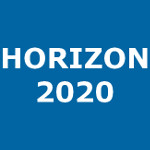Complex free-space magnetic field textures induced by three-dimensional magnetic nanostructures
Donnelly, C ; Hierro-Rodriguez, A ; Abert, C ; Witte, K ; Skoric, L ; Sanz-Hernandez, D ; Finizio, S ; Meng, FF ; McVitie, S ; Raabe, J ; Suess, D ; Cowburn, R ; Fernandez-Pacheco, A (Universidad de Zaragoza)
Resumen: The design of complex, competing effects in magnetic systems-be it via the introduction of nonlinear interactions(1-4), or the patterning of three-dimensional geometriesm-is an emerging route to achieve new functionalities. In particular, through the design of three-dimensional geometries and curvature, intrastructure properties such as anisotropy and chirality, both geometry-induced and intrinsic, can be directly controlled, leading to a host of new physics and functionalities, such as three-dimensional chiral spin states(7), ultrafast chiral domain wall dynamicss(8-10) and spin textures with new spin topologies(7, 11). Here, we advance beyond the control of intrastructure properties in three dimensions and tailor the magnetostatic coupling of neighbouring magnetic structures, an interstructure property that allows us to generate complex textures in the magnetic stray field. For this, we harness direct write nanofabrication techniques, creating intertwined nanomagnetic cobalt double helices, where curvature, torsion, chirality and magnetic coupling are jointly exploited. By reconstructing the three-dimensional vectorial magnetic state of the double helices with soft-X-ray magnetic laminography(12, 13), we identify the presence of a regular array of highly coupled locked domain wall pairs in neighbouring helices. Micromagnetic simulations reveal that the magnetization configuration leads to the formation of an array of complex textures in the magnetic induction, consisting of vortices in the magnetization and antivortices in free space, which together form an effective B field cross-tie wall''s. The design and creation of complex three-dimensional magnetic field nanotextures opens new possibilities for smart materials(15), unconventional computing(2, 16), particle trapping(17, 18) and magnetic imaging(19).
Idioma: Inglés
DOI: 10.1038/s41565-021-01027-7
Año: 2022
Publicado en: NATURE NANOTECHNOLOGY 17 (2022), 136–142
ISSN: 1748-3387
Factor impacto JCR: 38.3 (2022)
Categ. JCR: NANOSCIENCE & NANOTECHNOLOGY rank: 2 / 107 = 0.019 (2022) - Q1 - T1
Categ. JCR: MATERIALS SCIENCE, MULTIDISCIPLINARY rank: 5 / 343 = 0.015 (2022) - Q1 - T1
Factor impacto CITESCORE: 54.6 - Engineering (Q1) - Chemical Engineering (Q1) - Physics and Astronomy (Q1) - Materials Science (Q1)
Factor impacto SCIMAGO: 13.141 - Atomic and Molecular Physics, and Optics (Q1) - Bioengineering (Q1) - Biomedical Engineering (Q1) - Nanoscience and Nanotechnology (Q1) - Electrical and Electronic Engineering (Q1) - Materials Science (miscellaneous) (Q1) - Condensed Matter Physics (Q1)
Financiación: info:eu-repo/grantAgreement/EC/H2020/701647/EU/International, Interdisciplinary and Intersectoral Postdocs/PSI-FELLOW-II-3i
Financiación: info:eu-repo/grantAgreement/EC/H2020/746958/EU/Perpendicular Magnetic Anisotropy: from Topological Defects to Reconfigurable Magnetic Devices/MAGTOPRECON
Financiación: info:eu-repo/grantAgreement/ES/MINECO-AEI/PID2019-104009RB-I00-AEI-10.13039-501100011033
Tipo y forma: Artículo (Versión definitiva)
Área (Departamento): Área Física de la Tierra (Dpto. Física Teórica)
 Debe reconocer adecuadamente la autoría, proporcionar un enlace a la licencia e indicar si se han realizado cambios. Puede hacerlo de cualquier manera razonable, pero no de una manera que sugiera que tiene el apoyo del licenciador o lo recibe por el uso que hace.
Debe reconocer adecuadamente la autoría, proporcionar un enlace a la licencia e indicar si se han realizado cambios. Puede hacerlo de cualquier manera razonable, pero no de una manera que sugiera que tiene el apoyo del licenciador o lo recibe por el uso que hace.
Exportado de SIDERAL (2024-03-18-12:42:30)
Visitas y descargas
Idioma: Inglés
DOI: 10.1038/s41565-021-01027-7
Año: 2022
Publicado en: NATURE NANOTECHNOLOGY 17 (2022), 136–142
ISSN: 1748-3387
Factor impacto JCR: 38.3 (2022)
Categ. JCR: NANOSCIENCE & NANOTECHNOLOGY rank: 2 / 107 = 0.019 (2022) - Q1 - T1
Categ. JCR: MATERIALS SCIENCE, MULTIDISCIPLINARY rank: 5 / 343 = 0.015 (2022) - Q1 - T1
Factor impacto CITESCORE: 54.6 - Engineering (Q1) - Chemical Engineering (Q1) - Physics and Astronomy (Q1) - Materials Science (Q1)
Factor impacto SCIMAGO: 13.141 - Atomic and Molecular Physics, and Optics (Q1) - Bioengineering (Q1) - Biomedical Engineering (Q1) - Nanoscience and Nanotechnology (Q1) - Electrical and Electronic Engineering (Q1) - Materials Science (miscellaneous) (Q1) - Condensed Matter Physics (Q1)
Financiación: info:eu-repo/grantAgreement/EC/H2020/701647/EU/International, Interdisciplinary and Intersectoral Postdocs/PSI-FELLOW-II-3i
Financiación: info:eu-repo/grantAgreement/EC/H2020/746958/EU/Perpendicular Magnetic Anisotropy: from Topological Defects to Reconfigurable Magnetic Devices/MAGTOPRECON
Financiación: info:eu-repo/grantAgreement/ES/MINECO-AEI/PID2019-104009RB-I00-AEI-10.13039-501100011033
Tipo y forma: Artículo (Versión definitiva)
Área (Departamento): Área Física de la Tierra (Dpto. Física Teórica)
Exportado de SIDERAL (2024-03-18-12:42:30)
Enlace permanente:
Visitas y descargas
Este artículo se encuentra en las siguientes colecciones:
Artículos > Artículos por área > Física de la Tierra
Registro creado el 2022-01-25, última modificación el 2024-03-19
